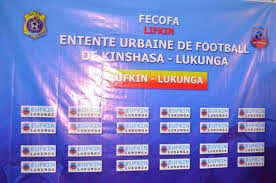Introduction: A Strategically Located but Underutilized Country
The Democratic Republic of Congo (DRC), with an area of 2,345,410 km², is the second-largest country in Africa. Thanks to its central position and abundant natural resources, it has the potential to play a key role in intra-African and global trade. However, despite these advantages, the DRC struggles to benefit from its transport corridors, mainly due to inadequate infrastructure and ineffective policies.
The Main Corridors in the DRC: Potential and Realities
1.1. Lobito Corridor (Atlantic)
This corridor connects the mining city of Kolwezi to the port of Lobito in Angola, via the Benguela railway. Although it is strategically important for exporting minerals from Katanga, its potential remains limited due to outdated and underutilized infrastructure.
Challenges:
Poor rail conditions and insufficient freight trains.
Weak coordination between the DRC and Angola to optimize the corridor’s use.
Potential Benefits:
Reduced export delays and costs for minerals.
Direct access to the Atlantic, lowering dependence on foreign ports.
1.2. Northern Corridor (Mombasa)
The Northern Corridor links eastern DRC to the ports of Mombasa (Kenya) and Dar es Salaam (Tanzania) via Uganda. It is crucial for agricultural exports and the import of manufactured goods.
Challenges:
Poor road conditions between Kisangani and the Ugandan border.
Persistent insecurity in eastern DRC, limiting trade flows.
Potential Benefits:
Facilitation of trade with East Africa.
Growth of agricultural exports (coffee, cocoa, tea).
1.3. Southern Corridor (Southern Africa)
This corridor, connecting the DRC to Zambia and South Africa, is one of the most dynamic due to mining and industrial trade.
Challenges:
Congestion at border posts, particularly in Kasumbalesa.
Poor conditions of national roads RN1 and RN39.
Potential Benefits:
Strengthened trade with Southern Africa, a key economic partner.
Industrial development opportunities along the corridor.
1.4. Congo River Corridor and Port of Banana
The Congo River is a natural transport route linking the country’s interior to the Atlantic Ocean. The port of Matadi plays a key role, but the upcoming deep-water Banana Port could be a game changer.
Challenges:
Insufficient modern port infrastructure.
Navigation difficulties due to siltation and lack of maintenance.
Potential Benefits:
Lower logistical costs for imports and exports.
Development of competitive maritime trade with regional ports.
1.5. Western Corridor: A Strategic Gateway to the Atlantic
The Western Corridor connects Kinshasa, the capital, to the ports of Matadi, Boma, and soon Banana on the Atlantic. It is one of the most important corridors for the DRC’s foreign trade.
Existing Infrastructure:
RN1 Road: This axis linking Kinshasa to Matadi is essential but suffers from frequent degradation.
Matadi-Kinshasa Railway: While operational, it is underutilized due to limited capacity.
Ports: Matadi and Boma handle 80% of the country’s maritime imports and exports.
Challenges:
Insufficient port infrastructure capacity to meet growing demand.
High transport costs between Kinshasa and Matadi.
Delays in the construction of Banana Port.
Potential Benefits:
Shorter transit times and lower logistical costs once Banana Port is operational.
Development of local industries around the ports.
Creation of thousands of direct and indirect jobs.
Obstacles to the Rapid Development of Infrastructure Lack of Funding
Building and rehabilitating infrastructure requires investments estimated at several billion dollars. Political Instability and Insecurity
Conflicts in eastern DRC hinder the implementation of infrastructure projects. Corruption and Poor Governance
Mismanagement of public funds allocated to infrastructure remains a major issue. Lack of Regional Coordination
Corridors that cross several countries require effective cross-border cooperation, which remains insufficient. Economic Opportunities from Better Corridor Exploitation Increased Exports
The DRC could significantly boost its exports of minerals, agricultural products, and manufactured goods. Job Creation
Modernizing infrastructure could generate more than 100,000 direct jobs in construction and logistics. Attracting Investors
Modern infrastructure would make the DRC more attractive to foreign investors, particularly in the mining and industrial sectors. Boosting Intra-African Trade
With efficient corridors, the DRC could become a regional commercial hub, increasing its share of intra-African trade, currently below 10%.
Conclusion: A Huge Potential to Harness
The transport corridors in the DRC represent a unique opportunity for economic growth. However, to transform this potential into reality, the country must overcome obstacles related to funding, governance, and security. Strong government commitment, supported by regional and international partnerships, is essential to turn these corridors and transport infrastructure into real drivers of development.
Rédaction
Articles similaires
Author(s): expobeton-newsletter.net
Source: Access the article

